The History of Brandy
What is BRANDY?
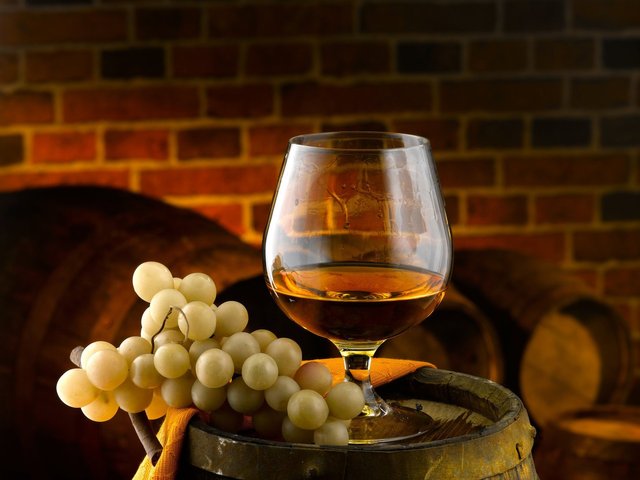
Brandy is the name used for diversity of potable spirits, made mostly from grape wines but sometimes also from other fruits. The name brandy is shortened form of brandywine, which comes from the Dutch word brandewijn, "brandewijn" ("burnt wine"), which is how the straightforward Dutch traders who introduced it to Northern Europe from Southern France and Spain in the 16th century described wine that had been "burnt," or boiled, in order to distill it.
Brandy is a spirit produced by distilling wine. Brandy generally contains 35-60% alcohol by volume (70-120 US proof) and is typically taken as an after dinner drink. Some brandies are aged in wooden cask, some are colored with caramel coloring to imitate the effect of aging, and some brandies are produced using combination of both aging and coloring.
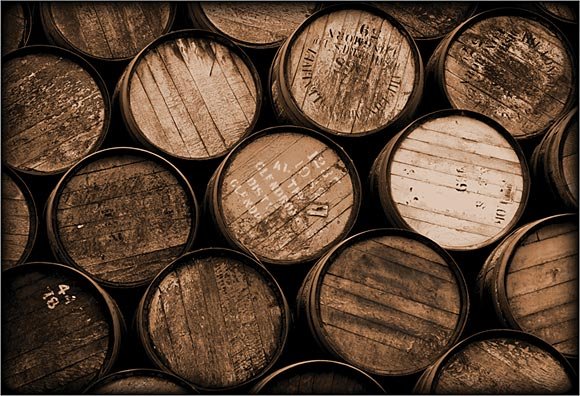
Like wine and whisky, brandy is often aged in wooden barrels, which increases its complexity and color intensity.
Brandy is made from so-called base wine, which significantly differs from regular table wines. It is made from early grapes in order to achieve higher acid concentration and lower sugar levels. It generally contains smaller amount (up to 20 mg/l) of sulfur than regular wines, as it creates undesired copper (II) sulfate> in reaction with copper in the pot stills. The yeast sediment produced during the fermentation may or may not be kept in the wine, depending on the brandy style.
Brandy is like Rum and Tequila, its an agricultural spirit. Unlike grain spirits such as Whisky, Vodka, and Gin, which are made throughout the year from grain that can be harvested and stored, Brandy is dependent on the seasons, the ripening of the base fruit, and the production of the wine from which it is made. Type of Brandies, originally at least, tended to be location-specific.(Cognac, for example is a town and region in France that gave its name to the local Brandy.) Important Brandy-making regions, particularly in Europe, further differentiate their local spirits by specifying the types of grapes that can be used and the specific areas (appellation) in which the grapes used for making the base wine can be grown.
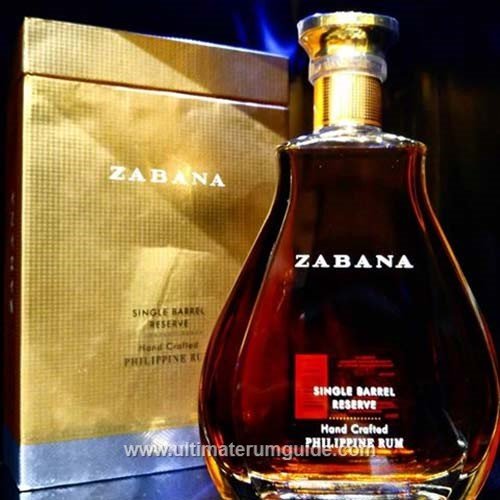
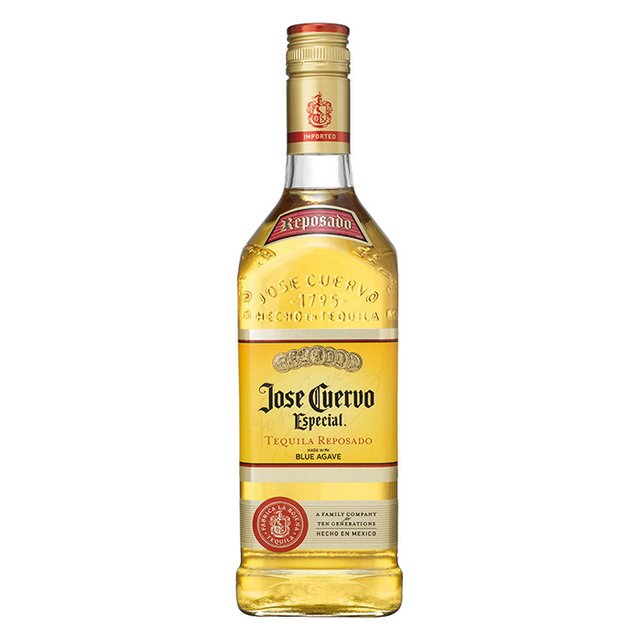

History of Brandy
The origins of Brandy can be traced back to the expanding Moslem Mediterranean states in the 7th and 8th centuries. Arab alchemists experimented with distilling grapes and other fruits in order to make medicinal spirits. Their knowledge and techniques soon spread beyond the borders of Islam, with grape Brandy production appearing in Spain and probably Ireland (via missionary monks) by the end of the 8th century. Brandy, in its broadest definition, is a spirit made from fruit juice or fruit pulp and skin. The origins of brandy were clearly tied to the development of distillation. While the process was known in the classical times, it wasn't used for significant beverage production up until the 15th century. More specifically, it is broken down, into three basic groupings.
- Grape Brandy is Brandy distilled from fermented grape juice or crushed but not pressed grape pulp and skin. This spirit is aged in wooden casks (usually oak) which colors it, mellows the palate, and adds additional aromas and flavors.
- Pomace Brandy (Italian Grappa and French Marc are the best-known examples) is Brandy made from the pressed grape pulp, skins, and stems that remain after the grapes are crushed and pressed to extract most of the juice for wine. Pomace Brandies, which are usually minimally aged and seldom see wood, are an acquired taste. They often tend to be rather raw, although they can offer a fresh, fruity aroma of the type of grape used, a characteristic that is lost in regular oak-aged Brandy.
- Fruit Brandy is the default term for all Brandies that are made from fermenting fruit other than grapes. It Should not be confused with Fruit-Flavored Brandy, which is grape Brandy that has been flavored with the extract of another fruit. Fruit Brandies, except those made from berries are generally distilled from fruit wines. Berries ten to lack enough sugar to make a wine with sufficient alcohol for proper distillation, and thus are soaked (macerated) in high-proof spirit to extract their flavor and aroma. The extract is then distilled once at a low proof. Calvados, the Apple Brandy from the Normandy region of Northwestern France, is one of the best known type of Fruit Brandy. Eau-de-vie ("water of life") is the default term in French for spirits in general, and specifically for colorless fruit brandy, particularly from the Alsace region of France and from California.
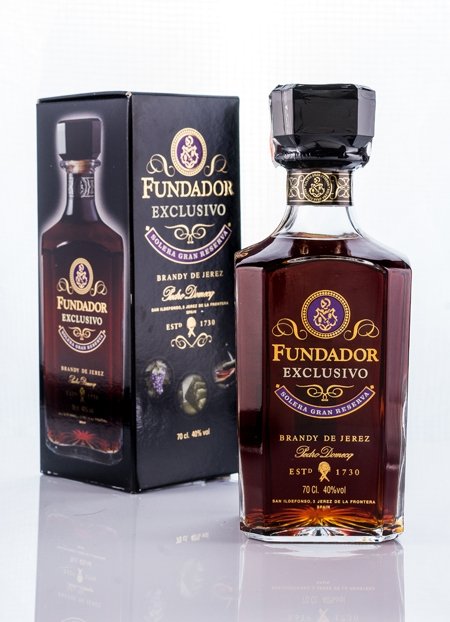
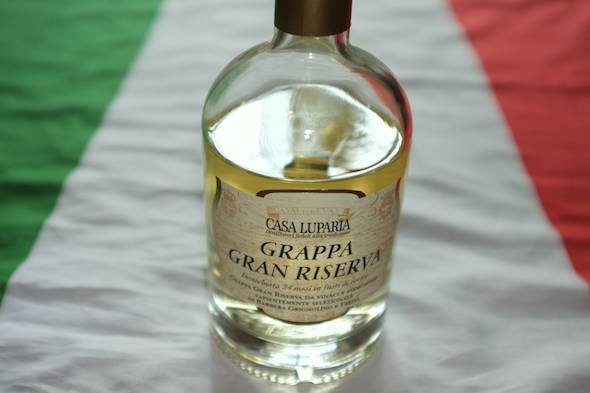
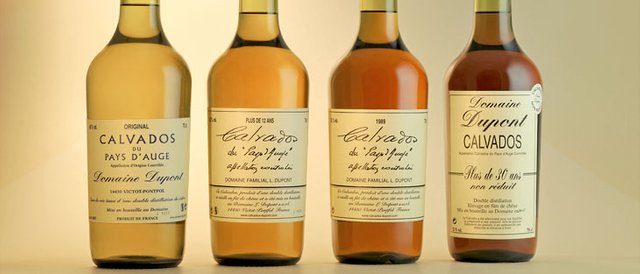

Different Types of Brandy
- Armagnac is made from grapes ofthe Armagnac region in the southwest of France, Gers, Landes and Lot-et-Garonne. It is single-continuous distilled in a copper still and aged in oak casks from Gascony or Limousin. Armagnac was the first distilled spirit in France. Armagnacs have a specificity: they offer vintage qualities. Popular brands are Darroze, Baron de Sigognac, Larressingle, Delord, Laubade, Gélas and Janneau.
- Cognac comes from the Cognac region of France and is double distilled using pot stills. Popular brands include Hine, Martell, Camus, Otard, Rémy Martin, Hennessy, Frapin Delamain and Courvoisier.
- Brandy de Jerez originates from vineyards around Jerez de la Frontera in Andalusia, Spain. It is used in some sherries and is also available as a separate product: It has a protected designation of origin (PDO).
- Kanyak(or konyak) is a variety from Turkey whose name is a variation of "cognac" and also means "burn blood" in Turkish, a reference to its use in cold weather.
- Italian Stravecchio has been produced since the 1700's in the North of Italy, especially in Emilia-Romagna and Veneto, using grapes popular in wine-making such as Sangiovese and Grignolino. Color, texture and finish are most resembling those of their French and Spanish counterparts. Most popular brands are Vecchia Romagna, Stravecchio Branca and Stock 84. Northern Italy is also noted since the Middle Ages for another type of wine spirit, Grappa, which is generally colorless but has some top-shelf varieties called barrique which are aged in oak casks and achieve the same caramel color as regular brandies. There is a vast production of Stravecchios and Grappas in Italy, with more than large, medium, or small distilleries in operations.
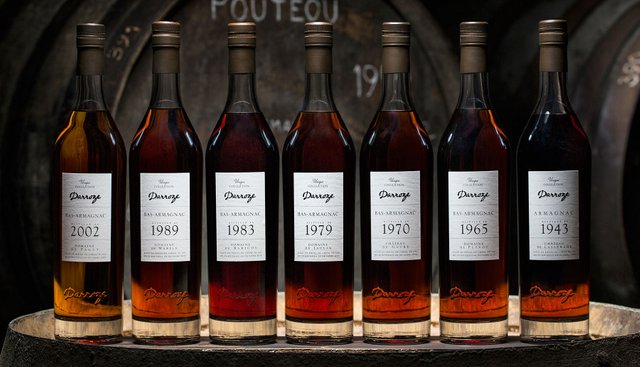
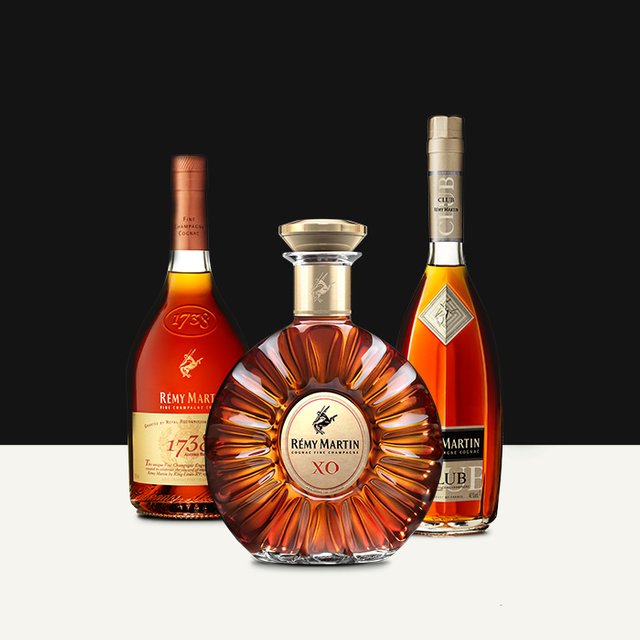
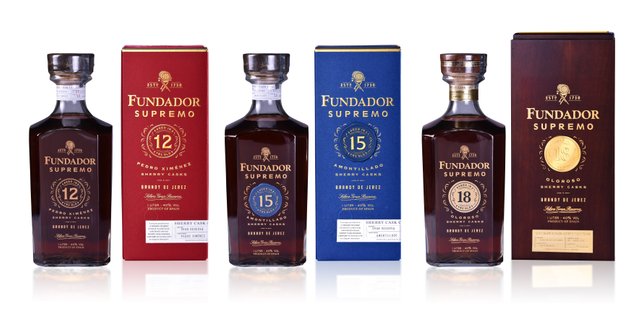
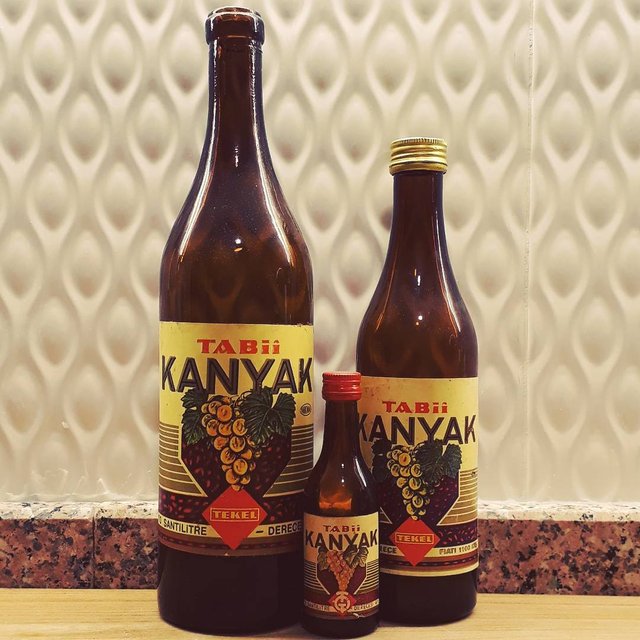
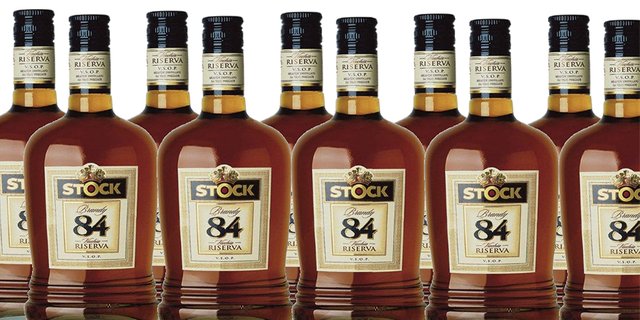
The European Union and some other countries legally enforce the use of "Cognac" as the exclusive name for brandy produced and distilled in the Cognac area of France, and the name "Armagnac" for brandy from the Gascony area of France. Both must also be made using traditional techniques. Since these are considered "Protected Designation Origin", a brandy made elsewhere cannot be called Cognac in these jurisdictions, even if it were made in an identical manner.

How Brandy is Made?

This is precisely what brandy is. To make brandy, wine is heated in a still until it separates into its components, which evaporate at various point on the temperature scale. The more volatile the component, the lower temperature at which it evaporates, leaving behind the impurities and heavier compounds. This is the process used to turn wine into brandy.
In broader sense, the term "brandy" also denotes liquors obtained from distillation of pomace (pomace brandy) or mash or wine of other fruit (fruit brandy). These products are also named Eaux-de-vie.
Varieties of wine brandy can be found across the wine-making world. Among the most renowned are Cognac and Armagnac from Southwestern France.
Brandy is distilled from the base wine in two phases. In the first, large part of water and solids is removed from base, obtaining so-called "low wine", basically a concentrated wine with 28-30% ABV. In the second stage, low wine is distilled into brandy. The liquid exits the pot still in three phases, referred to as the "heads", "heart", and "tails" respectively. The first part, the "head", has as alcohol concentration of about 83% (166 US proof) and an unpleasant odor. The weak portion on the end, "tail", is discarded along with the head, and they are generally mixed with another batch of wine, thereby entering the distillation cycle again. The middle heart fraction, richest in aromas and flavors, is preserved for later maturation.
Distillation does not simply enhance the alcohol content of wine. The heat under which the product is distilled and the material of still (usually copper) cause chemical reactions to take place during distillation. This leads to the formation of numerous new volatile aroma components, changes in relative amounts of aroma components in the wine, and the hydrolysis of components such as esters.
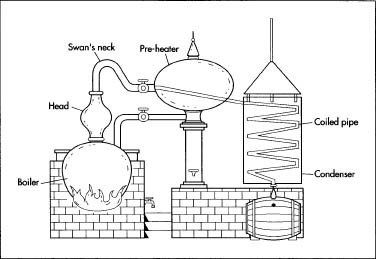
Brandy is usually produced in pot stills (batch distillation), but the column still can also be used for continuous distillation. Distillate obtained in this manner has a higher alcohol concentration (approx 90% ABV) and is less aromatic. Choice of the apparatus depends on the style of brandy produced. Cognac and South African brandy are examples of brandy produced in batches while many American brandies use fractional distillation in column stills.
Aging and Distillation
After distillation, the nonage brandy is placed into oak barrels to mature. Usually, brandies with a natural golden or brown color are aged in oak casks (single-barrel aging). Some brandies, particularly those from Spain, are aged using the Solera System, where the spirits changes the barrel each year. After a period of aging, which depends on the style, class and legal requirements, the mature brandy is mixed with distilled water to reduce alcohol concentration and bottled. Some brandies have caramel color and sugar added to simulate the appearance of barrel aging.

Needs sources.
@hiarevalo Very nice content..!! Keep it up!! :D
Thanks bro! @awchel
This article is very interesting. I'm gonna feature this to my blog @hiarevalo! You're doing great!
@steemitdigest I never expect it. Im excited for your for next blog! Thank you so much!
@hiarevalo got you a $1.5 @minnowbooster upgoat, nice! (Image: pixabay.com)
Want a boost? Click here to read more!
This post has received a 3.03 % upvote from @bellyrub thanks to: @hiarevalo.
That was a very comprehensive post. People in need of this topic should be finding your page as it is very helpful. I can see how dedicated you are in creating your content. Keep it up buddy.